Derek Guy once made fun of me for thinking poplin is the best shirt fabric. It’s boring, he proclaimed, in contrast with much more texturally interesting, varied fabrics—like Oxford weaves, chambrays or various dobby fabrics.
And I don’t disagree with the appeal of any of those other fabrics for their particular texture and other qualities. After all, this site ranks highly on searches related to oxford cloth button down shirts, and the number of chambray shirts I own is almost embarrassing (almost).
But I stick to my guns on what makes poplin great (as well as broadcloth. Those two are usually thought of as the same thing, and they are indeed woven the same, but there is a technical distinction. Broadcloth has the same weight of thread in both warp and weft, while poplin can have different weights of thread. Some say broadcloth is more wrinkle-prone, though in my experience the thickness of cotton fiber is the best determinant of how wrinkly or not a shirt is—thinner is more wrinkle-prone).
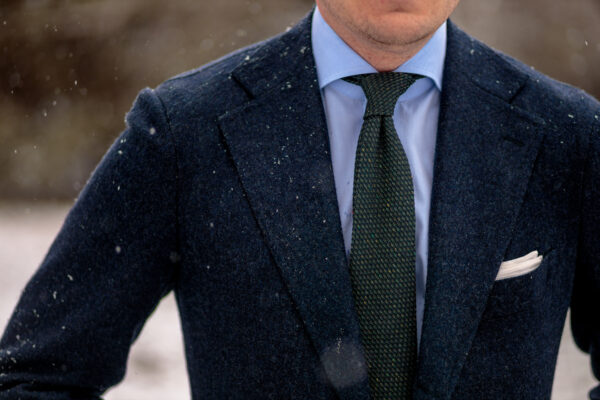
Here are my reasons why poplin is the best default shirt fabric for a dress shirt.
1- Silky smooth comfort. It slides right on over your skin and feels great. Sometimes cheaper poplins can feel a little more paper-like and stiff, but the good stuff is comfortable and smooth.
2- It layers very well under knitwear or unlined jackets. The colder months are when I pull out the Oxford cloth shirts—their thicker heft is too warm for the summer where I live, and they feel right at home with tweed and flannel. But the heftier thickness is bulky underneath a sweater, and its weave is more grabby, pulling on the sweater. It gets worse throughout the day as the shirt inevitably comes untucked a little—the folds above the waistline make the sweater bulge out and it’s unflattering. In contrast, poplin is smooth, so it doesn’t catch on knitwear, and it’s more pliable so it doesn’t add bulk. And even in the warmer months, if you have unlined blazers or sportcoats, you get the same benefit—it doesn’t catch on the fabric of the jacket if it’s unlined, and make it drape in strange ways.

3- Its plain, no-sheen appearance lets your other textures shine. Putting together a great outfit is a combination of a bunch of things: Choosing what silhouette you want to have, combining colors and patterns, harmonizing colors, etc. Less appreciated is the effect of choosing different textures. I’ve found that it’s easy to go texture-overload—a scratchy tweed jacket over a rumpled oxford cloth shirt with a matte ancient madder tie, paired with fuzzy flannel trousers and suede boots on your feet. In some ways that’s a super appealing outfit, but it’s a bit too much. Swap out the Oxford shirt for poplin and you have a stage on which the scratchy tweed and ancient madder tie can take the center. (Similarly, swap out the suede boots for calf leather and you create great textural contrast with your flannel trousers.)
These three reasons are why poplin (or broadcloth—or their somewhat deranged cousin end-on-end, which is the same weave but with colored threads to create the appearance of visual texture) is my favorite go-to dress shirt fabric.
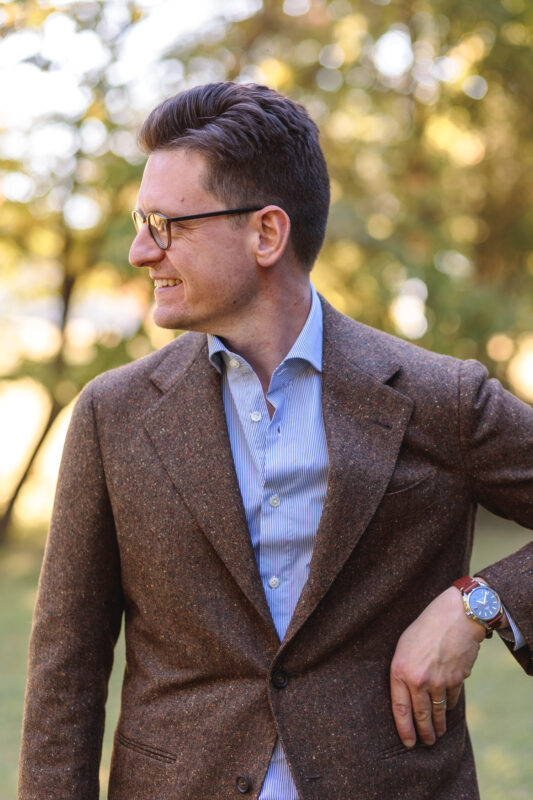
Now, the downsides
1- It wrinkles and requires ironing. If you look at my shirt closet, like half are chambray or Oxford cloth. And there’s a good reason—both can be worn without ironing. I machine wash and hang-dry all my shirts. Ironing is a pain, and so more often than not it’s simply out of convenience I throw on an OCBD or chambray shirt. So my advice is just iron it as best you can and roll with whatever wrinkles come about.
2- It can be a little transparent. Particularly white poplins can be a little transparent if they’re lightweight. This is where seeing the shirt in person, or using the transparency guide from a custom maker such a Proper Cloth is helpful. If you’re an under-shirt guy, that’ll also solve your problem.
3- It can stick to your skin when you sweat. All cotton shirts will stick to your skin when you sweat, but the finely woven, smooth quality of poplin makes it particularly sticky when you’re really sweaty.
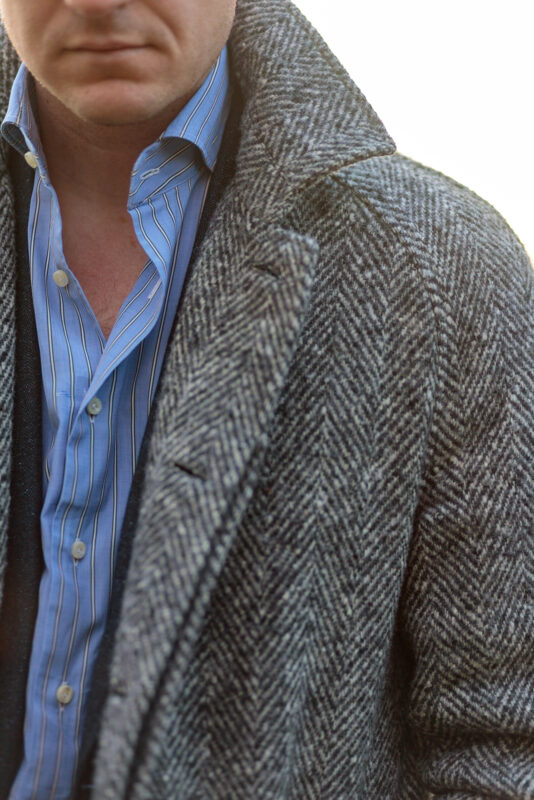
So poplin/broadcloth doesn’t come without its issues. But in all, I recommend poplin as the default shirting when you’re building out a dress wardrobe. Here are recommendations for specific shirts, fabrics and custom configurations. I’m linking a lot of shirt fabrics from Proper Cloth. Remember you can get 10% off your first order with my referral link and the code MUSINGS10.
White Thomas Mason Luxury Broadcloath White shirt from Proper Cloth
(I own this shirt with a tall soft Milano collar. It is not very wrinkly, it is not transparent, and it has a fantastic smooth hand)
Recommended configuration:
Roma Cutaway or President Spread
Long One Button Rounded Cuff
French Placket
No Pocket
No Rear Pleats
Single Piece Yoke
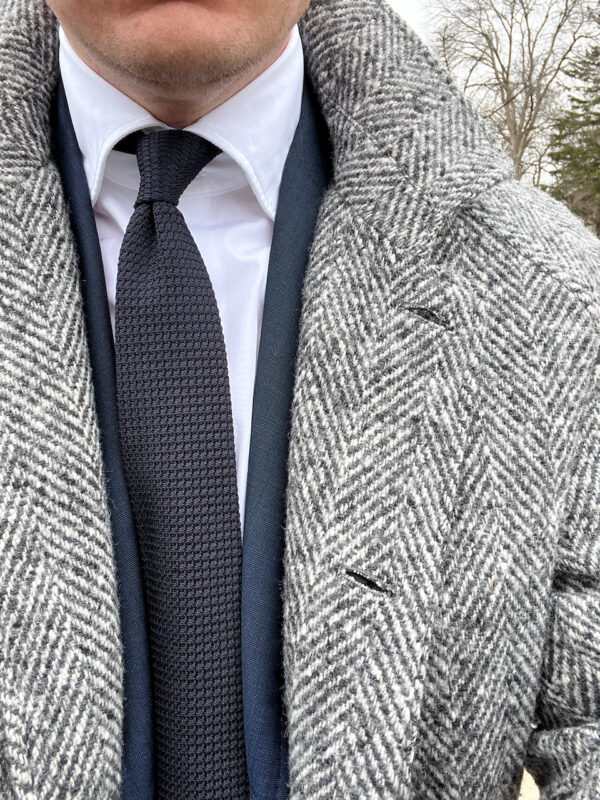
Pale Blue Thomas Mason Luxury Broadcloth White shirt from Proper Cloth
(Based on how much I like the white one, I have the blue version on my wishlist)
Same configuration as the white one
Bengal Stripe (royal blue) (also consider light blue)
Right now Spier & Mackay has some new poplins and end-on-ends off the rack with their nicer Italian collars.
Butcher stripe in pale blue or cobalt blue
End-on-end in pale blue or white (also in pink and taupe)
Also don’t forget about Spier’s custom shirt program. I love their huge selection of collars. Here’s my guide to their custom shirt program.
Go for the gold and get Italian shirts like Finamore or from Anglo-Italian
Anglo-Italian sky blue poplin (I’ve heard these are great quality but very wrinkle-prone)
(Help support this site! If you buy stuff through my links, your clicks and purchases earn me a commission from many of the retailers I feature, and it helps me sustain this site—as well as my menswear habit ;-) Thanks!)
Shop my clothing from this post and every other post on the Shop My Closet page. If you’re just getting into tailored menswear and want a single helpful guide to building a trend-proof wardrobe, buy my eBook. It doesn’t cost that much and covers wardrobe essentials for any guy who wants to look cool, feel cool and make a good impression. Formatted for your phone or computer/iPad so it’s not annoying to read, and it’s full of pretty pictures, not just boring prose. Buy it here.


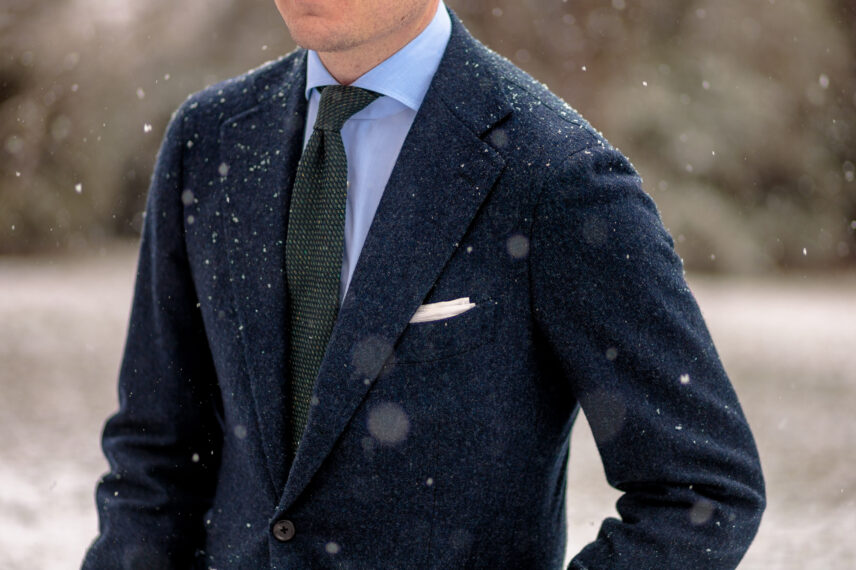
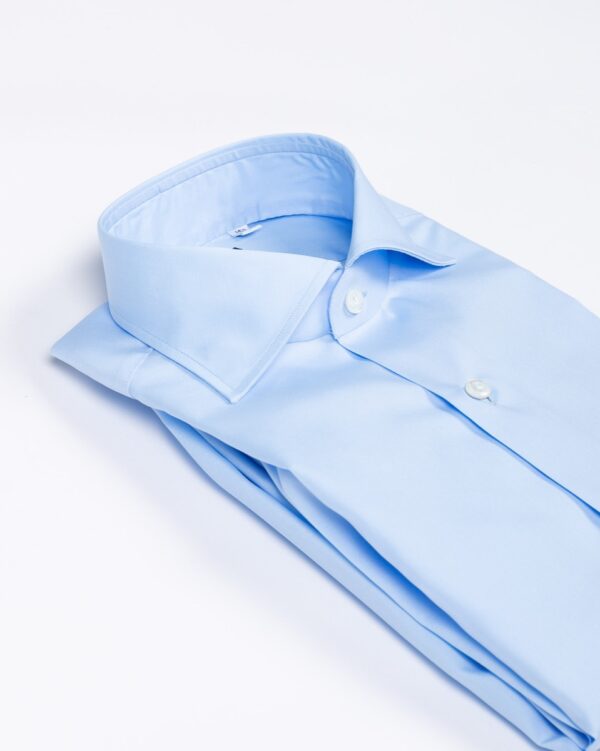
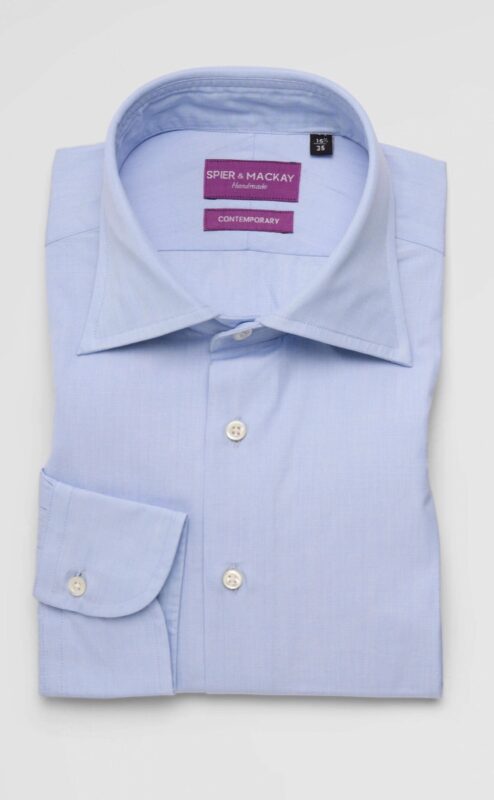
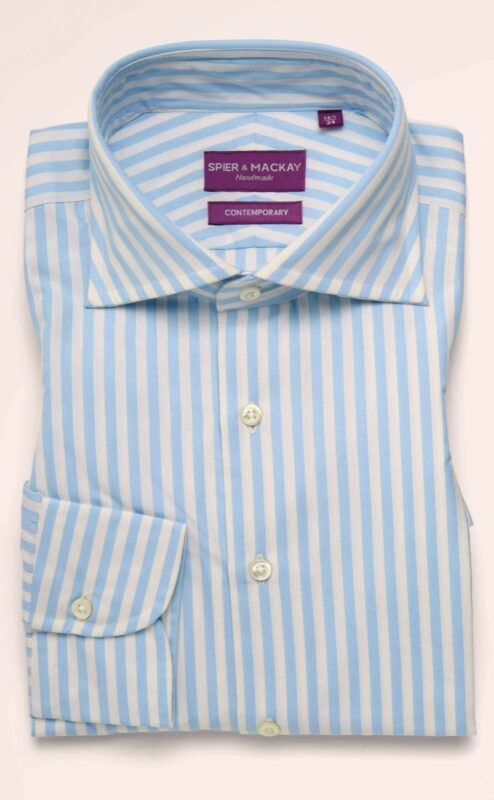
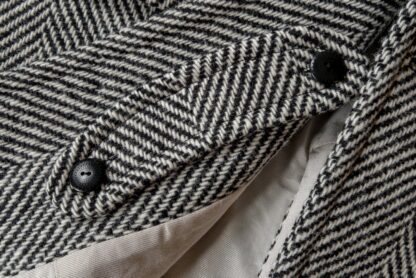
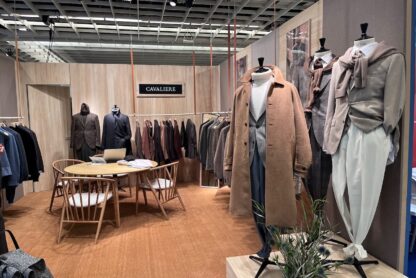



Nice article and very much agree with it. I think your point about texture is particularly useful. All-fuzzy is as off-putting as all-slick; one ahs to balance and contrast.
Another valid point is that you can wear poplin shirts anywhere but O (of reasonable heft) is far too warm in most places for much of the year.
For visual texture with a smooth finish my all-time favorite is end-on-end especially in blue and pink
Never had a pink one, but I’m intrigued. Who’s your favorite shirtmaker Gus? Do you shop off the rack or have shirts made anywhere?
I’d appreciate your Thoughts on proper cloth non-iron fabrics?
Also, on proper cloth, they don’t have poplin in the fabric filters, just broadcloth. Any tips on finding poplins in PC?